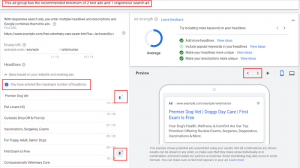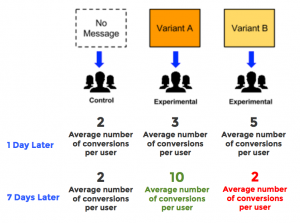— December 3, 2017

Dashboard.
Alphabet soup rules our lives, or so it sometimes feels these days. Digital Pay-per-Click (PPC) advertising has opened the door to a multitude of other abbreviations in the media buying world, and when more than one iteration of an acronym exists it’s bound to get confusing.
We’ve unpacked the terms here that you’re most likely to hear in the digital marketing environment, and clarified the differences for you.
Understanding “Regular” CPM
The acronym CPM is based on the cost of each 1,000 ad impressions. In Roman numerals, “thousand” is represented by M for mille (as in millennium), therefore the cost per thousand is CPM. This refers to the cost of having an advertisement displayed to 1,000 viewers, which is the basic benchmark for determining the reach of a media ad. You can only measure CPM, however, when you’re actually buying media impressions by the thousands, which is what the industry calls “regular” CPM. In these cases, the regular CPM is the same as the actual, or effective, cost per thousand or eCPM.
Comparing Apples and Oranges
A lot of the time, however, advertising is sold using models such as Cost Per Click (CPC), which means you’re stuck trying to compare the proverbial apples and oranges. So, to enable advertisers to assess the value of a CPM ad buy against a CPC ad buy, it’s necessary to consider them both in terms of the effective cost per thousand (eCPM).
Calculate the eCPM by dividing the total campaign expenditure by the number of impressions x 1,000. Regardless of whatever the cost per click turns out to be, the final result enables you to compare the eCPM with that of a cost-per-impression based media buying campaign.
The Shifting Sands of Pricing
Of course, it doesn’t end there. That would make it far too easy to master, wouldn’t it? There are also other metrics that come into play, such as dynamic CPM (dCPM). This refers to the constantly-changing cost associated with real-time bidding, which is the practice of paying more (or less) for digital ads depending on the day, time, placement and other factors affecting how many users see them. Ads cost more during peak periods, for example, than they do in the dead of night. For advertisers purchasing 100,000 impressions, it’s a certainty some of those may be displayed during off-peak periods. The marketer pays a lower price for these than ads displayed in prime time, but the fluctuating costs are only determined after ads are displayed. So the cost shifts, depending on impressions viewed during different pricing periods.
The Cherry on the Cake
Arguably the most important cost factor is the cost per action or acquisition (CPA), because this is the one that determines ROI. Whether the intended action from your ad is a click, a contact, or an order, it counts as a conversion, and that’s the criteria that drives advertising.
Ultimately, your C-suite will calculate your adspend against the revenue you generate to evaluate the returns percentage you’re getting. The CPA correlates, therefore, to the CPM to a degree, too; after all, it doesn’t really matter how good a deal the eCPM is, if your CPA is too high for comfort.
Too Many Ways to Count
These are just some of the metrics you can use to figure out the value of your digital media buying. While it might seem like far too many ways to count the same number of beans, choosing metrics that complement each other enables you to build a comprehensive visual of an advertising campaign’s overall value. And that’s the metric that really counts!
Digital & Social Articles on Business 2 Community
(83)








